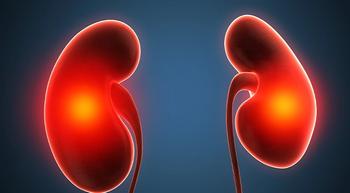For patients with breast cancer who are pregnant, treatment with chemotherapy has been found to be safe and effective, as an expert explained to CURE®.
“We do have data now to show that these patients can be treated safely, and treated safely with chemotherapy, and still do just as well as patients who were not pregnant and diagnosed with breast cancer,” said Dr. Oluchi C. Oke in an interview.
Oke is the co-author of study findings published in Cancer which showed that at a median follow-up of 11.4 years, median disease-free survival (DFS) and overall survival were not reached for pregnant patients, and were 5.6 years and 19.3 years for nonpregnant patients.
This, according to Oke — of the Department of General Oncology, Division of Cancer Medicine, The University of Texas MD Anderson Cancer Center — means that not enough pregnant patients died or had their disease come back for researchers to be able to calculate those figures.
Additionally, median progression-free survival was 24.1 years for pregnant patients versus 8.4 years for nonpregnant patients, researchers reported.
Glossary:
Disease-free survival: the time a patient lives without signs or symptoms of cancer after treatment.
Overall survival: the time a patient lives, regardless of disease status.
Progression-free survival: the time a patient lives without their disease spreading or worsening.
“Some of it may be [due to] just the fact that, you know, these [pregnant] patients were followed in a closer protocol,” said Oke. “So, there may be some bias from that, the fact that they were followed closely, so we have a lot more long-term data for them than some of the other patients. So, that could be it.
“The other [factor] that also is an aspect too, [is] the fact that they have close follow up and a lot of times had close monitoring while pregnant, so sometimes you could say that that and kind of the careful treatment sometimes leads to better outcomes.”
Breast cancer during pregnancy is rare, with researchers citing findings in the study stating that it occurs in approximately 2.4 to 7.3 of every 100,000 pregnancies. However, those numbers are on the rise, Oke said.
“We are seeing more, unfortunately, pregnancy-related breast cancers, especially as women start to have children at a later age,” she said.
In the study, researchers observed patients treated with systemic therapy for breast cancer at MD Anderson from 1989 to 2022, with pregnant patients with breast cancer matched to nonpregnant patients for comparison. Chemotherapy was administered in the second and third trimesters, with regular monitoring by maternal-fetal medicine physicians.
Patient demographics were well-balanced between the two arms, including mean age at diagnosis (33.4 years for the pregnant cohort and 33.8 years for the nonpregnant cohort), time from diagnosis to treatment initiation (median of 25 days for the pregnant cohort and 27 days for the nonpregnant cohort) as well as HR/HER2 status and HR/HER2 subtypes.
Among 143 pregnant patients and 285 nonpregnant patients, the five-year DFS probability (with a probability of 1 being a certainty that something will happen) was 0.72 for pregnant patients and 0.52 for nonpregnant patients. Similarly, five-year and 10-year OS probabilities were 0.8 and 0.73, respectively, for pregnant patients and 0.75 and 0.6 for nonpregnant patients. Five-year PFS probability was 0.74 for pregnant patients and 0.62 for nonpregnant patients, researchers reported.
It was determined that, controlling for all other variables, nonpregnant patients had a 1.9 times higher risk of disease recurrence, a 1.7 times higher risk of disease progression or death and a 1.5 times higher risk of death than pregnant patients.
“Results of this study suggest that this cohort of [pregnant] patients [with breast cancer] treated with chemotherapy during pregnancy have at least comparable, if not superior, outcomes compared to nonpregnant breast cancer patients with similar age, year of diagnosis, stage and HR/HER2 subtype,” researchers noted in the study.
Reference:
“Outcomes of patients treated with chemotherapy for breast cancer during pregnancy compared with nonpregnant breast cancer patients treated with systemic therapy” by Dr. Helen M. Johnson, et al., Cancer.
For more news on cancer updates, research and education, don’t forget to subscribe to CURE®’s newsletters here.





